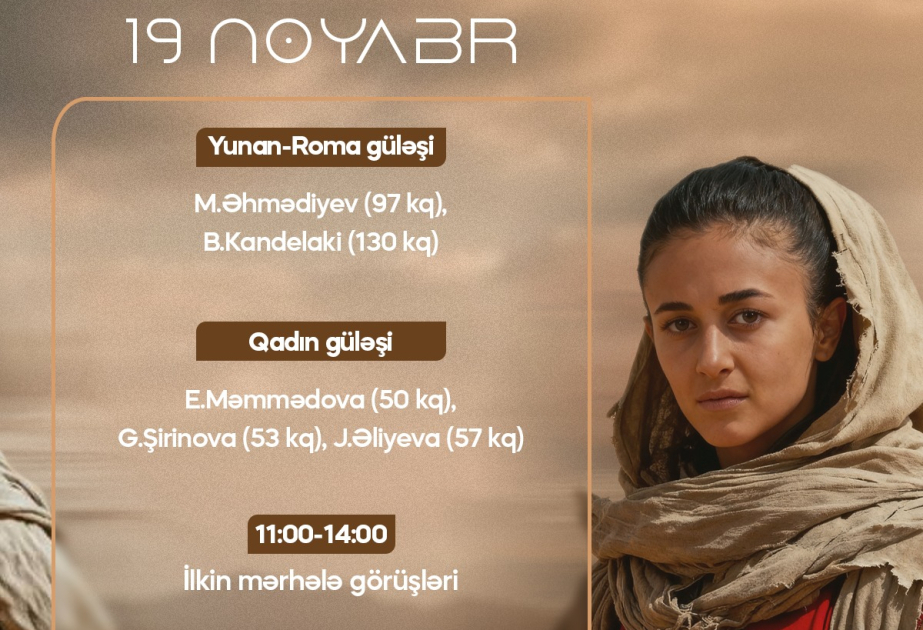Ruth Schuster
First-ever proof of fabled wild animal combat: Pelvic lesions on decapitated body in gladiators' cemetery in York from 1,800 years ago were caused by a lion
Deep lesions on the pelvic bone of a decapitated body found 20 years ago in a gladiator graveyard in York have now been identified as a lion bite.
This is the first time archaeological proof has been found of the fabled human-animal battles in the arena, Prof. Tim Thompson of Ireland's Maynooth University, Prof. John Pearce and colleagues reported Wednesday in PLOS One.
Gladiator combat in the Roman era is the stuff of a lot of history and even more cliché. But confirmed remains of gladiators are rare. Archaeologists have found dozens of bodies at graveyards thought to be associated with gladiator fights in Greece's Ephesus and northern England's York, where the Romans ruled from the first century to the fifth.
Clues to a gladiatorial burial include injuries to the men's faces and heads – though apropos, many of the bodies had been decapitated. That actually supports the putative identification. Laid to rest cuddling one's cranium turns out to be a key clue for archaeologists seeking gladiator graves.
Another indicator is one arm being stronger than the other, as would befit a man fighting for his life for a living.
While historical narratives and art depicting "beast hunts" exist, proof has been elusive. Mosaics showing the violence and even transport of the animals are not rare. Bones of the perpetrators are. But in the second or third century, this man interred in what many believe is the gladiatorial burial ground in ancient York was bitten hard by a lion, the team reports.
Romans buried the dead outside the city. The graveyard now at York's Driffield Terrace was discovered in the time-honored way: infrastructure works ahead of construction.
The excavators noted a high proportion of bodies where the head was placed by the feet or in the corpse's arms. The graves were shallow, only a few had grave goods and while most had one body, some had up to four.
When the pelvis with the marks was unearthed, the archaeologists immediately thought it showed a clear signature of human-animal combat. The question was, which animal?
I smell a cat
"The remains were excavated about 20 years ago, and the bite marks were spotted at the time," Thompson explains by email. "There was general discussion about them then, and over the years, but we were the first to properly examine them and to work on determining conclusively which animal caused them."
In fact, the team excavating the Roman cemetery at the time, led by Prof. Mike Wysocki of the University of Central Lancashire, noted that the bite was indicative of gladiators because it looked like a big cat did it. However, big cats are not native to Britain, and what would one be doing there almost 2,000 years ago? Ergo, these are gladiatorial remains.
We believe that the individual was incapacitated by some means, and then dragged by the cat.
Prof. Tim Thompson
Lions kill prey by suffocation. Their kills typically feature puncture wounds on the head, not the hips. The actual meal will usually start with the innards. But who's to tell a large cat sinking its teeth into a soldier that closed its maw on the wrong part?
Even though the body was beheaded, marks left by a lion strangling the man and/or ripping out his throat would ikely have remained, Thompson says. "The decapitation is a clear feature that causes little damage elsewhere," he explains. "Indeed, we believe that the individual was incapacitated by some means, and then dragged by the cat."
Anyway, we can't say whether the lion killed the man or perhaps mauled him to the point that the organizers took pity and decapitated him.
"The bite marks are perimortem," Thompson says. "But the actual cause of death has left no marks on the skeleton – although this is not surprising in itself."
It is also plausible that those deep lesions in the pelvis were caused by the cat dragging its meal away from center stage so it could eat in peace.
"Determining between peri- and postmortem damage can sometimes be challenging – especially if that postmortem damage is moments or hours after the death of the individual," adds co-author Prof. David Errickson of England's Cranfield University.
Thumbs down
Asked how common it was for the Romans to decapitate their gladiators, co-author Pearce explains that this is tricky territory, since the evidence is limited.
First of all, many losing gladiators would survive because – as shown in Roman art – the fight often ended with the surrender of the losing/exhausted/incapacitated gladiator, followed by the decision of the games-giver (who might delegate to the crowd) if they live or die, he says.
If the loser put on a "good show," they would likely be spared, he adds. Their sponsors would like that – because when a gladiator died, tragically for their wallets, they'd have to cover his purchase price rather than just the cost of his hire.
But how they might die is another matter. The literary and visual evidence is extremely rare, Pearce says. Some of it suggests throat cutting, others stabbing in the back or a hammerblow to the head.
"Decapitation isn't one of these end-of-bout outcomes, though the literary/visual evidence base is small, and we have so few known gladiator cemeteries (as opposed to tombstones) – effectively only one certain, from Ephesus," he qualifies.
What about the one in northern England? "At York, the evidence is circumstantial, and not everyone accepts it. The sample is of about 80 burials, from a much larger cemetery area, almost all adult males buried singly or occasionally in a double or triple burial spread over a couple of centuries or so."
The York analysis shows that at least sometimes in northern Europe, much more exotic animals were used and implies a games sponsor interested in making a likely big impression through a more theatrical novelty.
Prof. John Pearce
They led violent lives, their skeletons exhibiting multiple healed wounds; and they died violent deaths. Many were decapitated. They seem to come from afar and were buried much alike, simply. "A fairly minimum-investment burial ritual," Pearce says.
There were no inscriptions that might have helped identify the dead. But, he adds, they were interred in a respectable place with regular soldiers and citizens buried nearby.
What might be the normal outcome for a bad gladiator, or how much did end-of-bout practice vary? It's really hard to know, he says. Moreover, in the Roman universe, decapitation was a punishment for high-status people. (What happened to errant others is a matter for another day.)
"My own view is that the gladiator interpretation remains the most plausible current one," Pearce sums up. He hasn't argued this in print for peer review but suspects, he kindly shares, that perhaps some of the dead were gladiators who trained in a familia – a gladiator training school at York, linked to the locally based Roman legion.
When the lion wins
Who did the lion bite? Was it a manly gladiator with gleaming muscles but poor weapons skills? A despised captive of war? A deviant (a category including Christians)? A criminal? The logic of sentencing criminals to death by animal fun was that people who reduced themselves to crime were beastly and deserved no better.
There were two principal forms of animal combat, Pearce explains. One involved specialized gladiators called venators going against predators, first and foremost the big cats, but bears too. This is amply shown in mosaic art.
The second is where animals were used to torment and execute captives and criminals, including Christians – "the so-called damnatio ad bestias spectacle, in which the victim was bound and/or defenseless and unarmed against the animal," the professor adds.
How common was animal combat? It probably was a common part of the arena experience, certainly in the Mediterranean, Pearce notes: "For example, the Pompeian painted inscriptions which advertise games almost always advertise a venatio (staged human-animal combat) as part of them. Roman art from the Mediterranean which shows scenes from the arena (mosaics, funerary monuments) commonly shows humans fighting animals, or performing high risk acrobatics."
When in Rome, likely they used more locally common animals such as stags. "The York analysis shows that at least sometimes in northern Europe, much more exotic animals were used, with major logistical implications, and implies a games sponsor interested in making a likely big impression through a more theatrical novelty," Pearce says. "'Inflation' (outdoing your predecessors in larger numbers of combatants, fancier armor, more 'exotic' combatants, human and animal) is a key phenomenon in the arena in Rome and likely the case elsewhere."
They'd also pit animal-a-animal, right? No humans? "Yes," Pearce answers. "Large aggressive animals could also be pitted to fight against each other, e.g., bull versus bear, or to present some form of the hunting they might undertake, whether with humans or in the wild."
After all this, there are caveats. Lion is the most likely outcome of the scans of the pelvic lesions, but they could have been made by a tiger, a leopard or even a bear. The Romans brought a vast array of animals – many categorically unsuited to fighting for their lives – to the arena for the public's pleasure. Giraffes can kill with a kick, but that isn't their go-to behavior.
In any case, the forensic analysis here suggests that the pattern of the teeth fits a lion and the man died for show before a roaring crowd some time between the year 200 to 300 in ancient Eboracum, on which the city of York would arise.
One last question: Would the Romans allow the lion to eat the gladiator and finish its meal? And would people watch this?
"The short answer is, we don't know. There is no direct evidence either way, and too many unknowns to guess with conviction," Pearce says.
"People wonder about the behavioral dynamics of the animals in the arena, how hard it was to get them to fight in the first place, rather than to seek shade or shelter, or even because of their familiarity with humans (some likely captured as cubs and reared), e.g., see the lion being led in the Nennig mosaic. They were probably not allowed to linger for a lengthy meal, as this would have delayed the next part of the show, and gladiator combat was the likely culmination of the day in the arena.
"More confidently, we can say that carcasses of slain animals were consumed by people – hence the very limited evidence for animal arena combatants from amphitheater excavations elsewhere."


.jpg)

.jpg)















